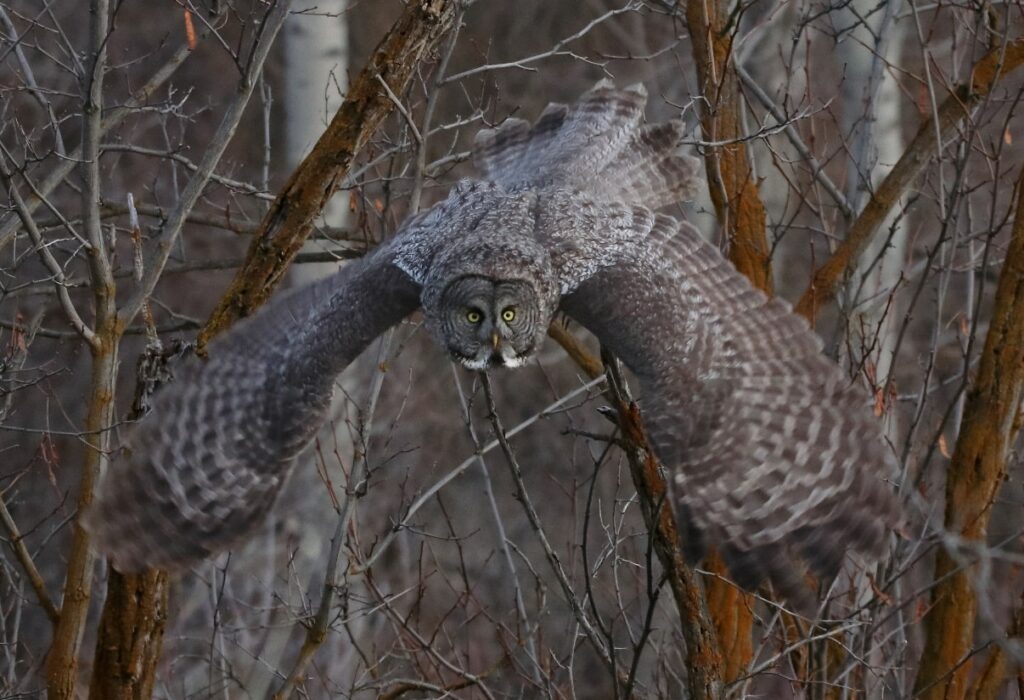It can be difficult to understand how animals of a similar size and rank in the food chain can become predators and prey. Though owls lack teeth to chew their food, their diet mainly consists of meat, even animals near the top of the food chain that you wouldn’t expect.
There is a large array of animals that owls will hunt and eat if given the opportunity. Though their favorite meals tend to consist of smaller animals like rodents, it’s not unheard of for owls to hunt down animals the same size as an owl. Owls will not miss out on the chance to have a cat as their meal if it happens to be in their environment.
Can Owls Eat Cats?
In short, yes, owls are capable of eating cats. While they may not be an owl’s food of choice, owls will occasionally eat neighborhood cats. Despite their similarity in size, owls are not afraid to go after a cat and often win in head-to-head combat.
Typically, owls that hunt cats are bigger than most owls. Common types that have been seen using cats as their meals include barred owls, great gray owls, great horned owls, and northern hawk owls. However, confident small owls like the western screech owl have also hunted cats.
While it would seem that a full-sized cat may be too much for an owl to handle, owls have hunting tactics that cats cannot possess. Though both have impeccable night sight, owls can attack from directly above their prey giving them an edge with surprise attacks. An owl can have a cat in the clutches of its talons before the cat even knew it was around.
Though cats seem like they would be too heavy for an owl to carry, bigger owls are incredibly strong. Their talons can hold up to nine pounds of prey, and smaller owls can carry up to five pounds. This puts an array of bigger animals on their menus including raccoons, possums, cats, and small dogs (like chihuahuas or Yorkshire terriers).

Why Do Owls Eat Cats?
Both owls and cats tend to use the cover of night to hunt down their prey. With both of them being more active at night, owls have the perfect opportunity to strike. There are numerous animals that both hunt that tend to be more active during daylight hours.
With similar animals on their prey lists (mice, small birds, squirrels, etc.), owls and cats are in direct competition with one another. Sometimes an owl will attack a cat that already has its prey caught. This allows the owl to steal the prey from a cat and possibly do less work for a meal. If all else fails, the owl can always take the cat instead.
Another reason is that owls take the job of protecting their young very seriously. If an owl comes back to its nest to see a cat trying to turn its children into dinner, the owl will not hesitate in attacking the cat.
The final reason is the main reason why any predator does anything. If there is a lack of food in the owl’s environment, cats will easily join the menu. Though squirrels and rabbits are much easier targets since they don’t put up as much of a fight as cats, owls are opportunistic hunters that will take a cat if they are available.
How Do Owls Hunt and Eat Cats?
Owls are not going to wonder about your cat and be friendly to it despite photos or videos you may have seen online. If your cat gets curious about an owl, the owl will not hesitate to make your cat its next meal.
However, owls do not necessarily look for cats when hunting. As stated above, there are easier prey options for owls that will not fight as well as cats will. If they are hungry enough, owls will look for anything that they can eat.
Owls typically scout for prey from the sky or perches. An owl will likely see a cat from above and decide whether or not to go for it. If they choose to, the owl will swoop down with incredible speed and pick the cat up. Once it is in the owl’s clutches, the cat doesn’t stand much of a chance. Owls tend to dig their talons into the necks and spines of their prey to immobilize them while they take them somewhere to consume them.
It is fairly common knowledge that owls do not have teeth and swallow most prey whole. Full-sized cats are far too large to do that. Owls will pick cats apart piece by piece with their beaks as they would food for their young.
How Can You Protect Your Cat from Owls?
Knowing that cats are a challenge for owls, they tend to choose cats that seem weaker. This means kittens, elderly cats, cats with mobility issues, or even cats who are ill are more likely to be on the menu for owls than full-grown healthy cats. If you have a cat that meets those qualifications, it’s best to only allow them outside under supervision (primarily during the day) and keep them inside.
If the cat you own is not an inside cat or prefers the outdoors, you could give them some kind of enclosed space to use instead of letting them roam free. Letting your cat have access to a patio or purchase items to make a “catio” that allows your cat to explore as much space as you allow them to. This keeps your cat happy and safe from predators.
Other things you can do include:
- Trimming dead branches to reduce nesting
- Informing neighbors to keep them from providing owls with food
- Removing an owl nest after all the eggs have hatched and left
- Keeping cat food and water inside
- Putting a collar with a bell or strobe lights on your cat
- Installing motion-sensitive lights
